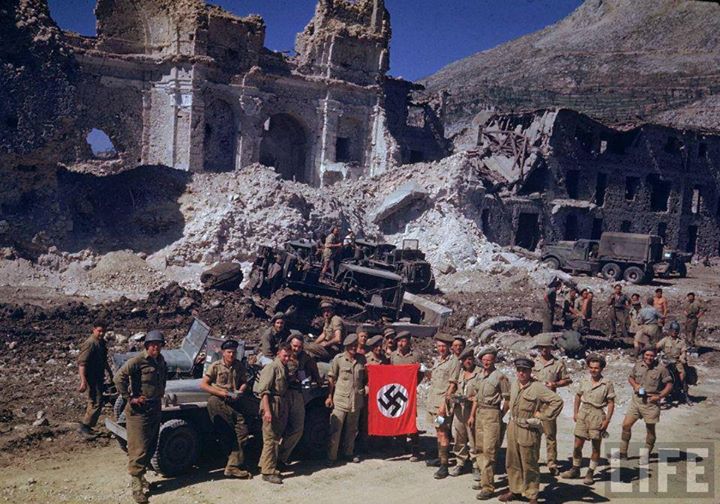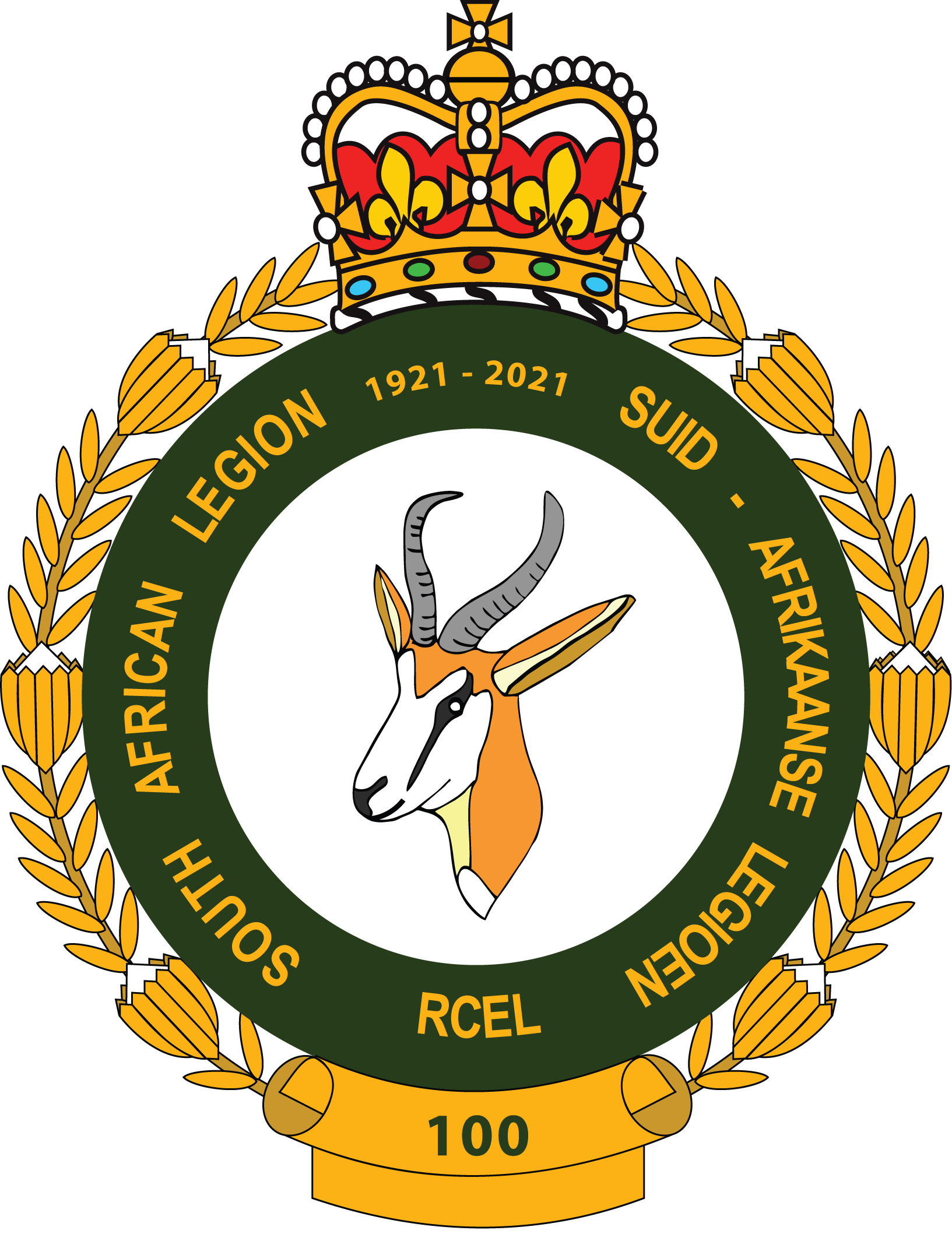
Famous LIFE colour photo from the Battle of Monte Cassino in Italy. May 1944 British, American and South African soldiers hold up Nazi trophy flag while combat engineers on bulldozers clear a path through the debris of the bombed out city.
The Battle of Monte Cassino (also known as the Battle for Rome and the Battle for Cassino) was a costly series of four assaults by the Allies against the Winter Line in Italy held by Axis forces during the Italian Campaign of World War II. The intention was a breakthrough to Rome.
At the beginning of 1944, the western half of the Winter Line was being anchored by Germans holding the Rapido, Liri, and Garigliano valleys and some of the surrounding peaks and ridges. Together, these features formed the Gustav Line. Monte Cassino, a historic hilltop abbey founded in AD 529 by Benedict of Nursia, dominated the nearby town of Cassino and the entrances to the Liri and Rapido valleys. Lying in a protected historic zone, it had been left unoccupied by the Germans. They had, however, manned some positions set into the steep slopes below the abbey’s walls.
Repeated pinpoint artillery attacks on Allied assault troops caused their leaders to conclude the abbey was being used by the Germans as an observation post, at the least. Fears escalated along with casualties, and in spite of a lack of clear evidence, it was marked for destruction. On 15 February American bombers dropped 1,400 tons of high explosives, creating widespread damage. The raid failed to achieve its objective, as German paratroopers occupied the rubble and established excellent defensive positions amid the ruins. Between 17 January and 18 May, Monte Cassino and the Gustav defences were assaulted four times by Allied troops, the last involving twenty divisions attacking along a twenty-mile front.
The German defenders were finally driven from their positions, but at a high cost. The capture of Monte Cassino tolled some 55,000 Allied casualties, with German losses being estimated at around 20,000 killed and wounded.
Photographer: Carl Mydans. LIFE Magazine copyright. Story for the Legion – Peter Dickens, reference wikipedia.
